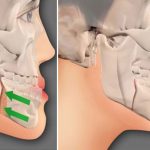What is the procedure of IVF treatment?
- Birth control Pill or estrogen – People have prescribed combination birth control pills (estrogen and progesterone), while others are given just estrogen. It allows your healthcare provider to control your treatment and maximize the number of mature eggs during the egg retrieval procedure.
-
Ovarian stimulation – During each natural cycle in a healthy person of reproductive age, a group of eggs begins to mature each month. Typically, only one egg becomes mature enough to ovulate. The remaining immature eggs in that group disintegrate.
The further steps in the ovarian stimulation process include:
Monitoring: Your ovaries response to the medication is examine by ultrasounds and blood hormone levels. Daily monitor or every alternative day is necessary. Most stimulations last between 8 to 14 days. At monitoring appointments, healthcare providers use ultrasound to examine your uterus and ovaries.
Trigger shot: When your eggs are ready for final maturation (determined by your ultrasound and hormone levels), a “trigger shot” is given to finalize the maturation of your eggs in preparation for egg retrieval. You’ll be instructed to administer the trigger shot exactly 36 hours before your scheduled egg retrieval time.
Egg retrieval –
- An ultrasound use to guide, a thin needle into each of your ovaries through your vagina. The needle is connected to a suction device used to pull your eggs out of each follicle.
- Your eggs are placed in a dish containing a special solution. The dish is then put in an incubator (regulated environment).
- Medication and mild sedation are used to reduce discomfort during this procedure.
- Egg retrieval is done 36 hours after your last hormone injection, the “trigger shot.”
Fertilization – Sperm will be injected into each mature egg. Immature eggs cannot have ICSI performed on them. The immature eggs will be placed in a dish with sperm and solution. If an immature egg does mature, the sperm in the dish can then assist to fertilize the egg.
Embryo development – Over the next five to six days, the development of your embryos will be carefully monitored.
Embryo transfer – There are two kinds of embryo transfers: fresh embryo transfer and frozen embryo transfer.
Pregnancy – Pregnancy occurs when the embryo implants itself into the lining of your uterus. Your healthcare provider will use a blood test to determine if you’re pregnant approximately nine to 14 days after embryo transfer.








